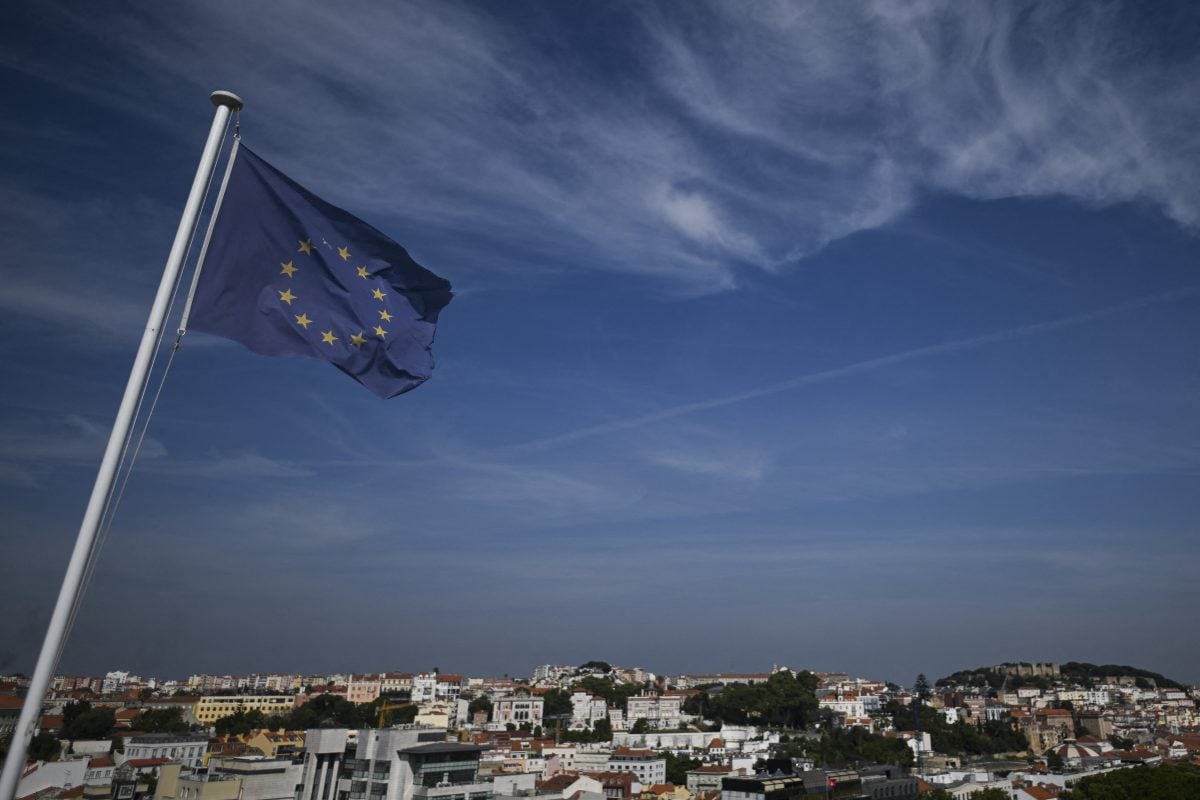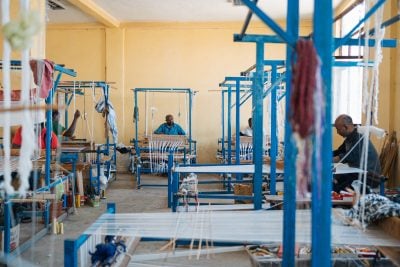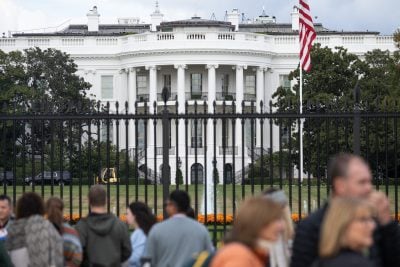The cost of importing African goods into the European Union is about to shoot up, with the EU’s carbon border tax set to enter its “definitive phase” on 1 January. A 2023 study published by the African Climate Foundation and the Firoz Lalji Institute for Africa at the London School of Economics and Political Science (LSE) looked at six scenarios for the Carbon Border Adjustment Mechanism (CBAM), using two different economic modelling approaches. In one model, the CBAM with carbon priced at €87 ($101) per tonne is forecast to reduce the GDP of no single African country by more than 0.18%. The other model, at the same price, forecasts a reduction in the GDP of the continent by 0.91% – equivalent to a fall of $25bn at 2021 levels of GDP.
The study suggests the aluminium sector is most exposed, followed by electricity and iron and steel exports. The CBAM could cause a fall of up to 13.9% in exports from Africa to the EU of aluminium; of iron and steel by 8.2%; of fertiliser by 3.9% and cement by 3.1%.
An EU official, Vicente Hurtado Roa, visited the African Union’s Pan-African Parliament last month to deliver a briefing on preparing for CBAM. But his argument that CBAM would help ensure fairness was met with a storm of objections from African delegates. Kenyan representative Esther Passaris warned the policy could amount to “economic colonialism”, while The Gambia’s Sawaibou Touray suggested CBAM could amount to a “trade barrier” from a Europe seeking to protect its industries.
So, why is Europe implementing a policy that could damage Africa’s export industries?
Aim for a level playing field
Currently, under the EU’s Emission Trading System (ETS), EU companies in many sectors are required to purchase carbon permits for their emissions, over a certain threshold. The ETS, which dates back to 2005, is widely viewed as having successfully incentivised EU companies to invest in lowering their carbon footprints. Its flaw, however, is that it puts EU companies that are subject to effective carbon taxes at a competitive disadvantage against imports from overseas, where the cost of production is lower because of the absence of a carbon tax.
CBAM is designed to correct this anomaly and create a level playing field for European and non-European companies. The mechanism has been in a transitional phase since 2023: importers have been required to report quarterly information on their emissions.
From 1 January the actual tax will take effect. Companies that import cement, iron and steel, aluminium, fertilisers, electricity or hydrogen are required to pay the tax, which relies on a complex system of carbon accounting to calculate the level of payment required.
CBAM’s effects will be felt unevenly across the continent. Because CBAM taxes are based on the “carbon intensity” of goods, the charge that importers incur will depend greatly on the electricity grid of the country where imported goods are produced.
The cost of importing aluminium from a company in Mozambique that uses grid electricity to power its facilities would rise only slightly under CBAM, since more than 90% of Mozambique’s electricity comes from hydropower, a renewable resource. However, if a company imported aluminium that was produced in the same way in South Africa, it would incur a far greater CBAM payment, since South Africa relies on coal to provide more than 70% of its grid electricity.
Renewable energy pays off
Tim Dobermann, research director at the International Growth Centre, notes that CBAM could offer opportunities for Mozambique and other African countries that rely heavily on renewables. “When you look at the peers with whom Mozambique is competing to sell into the EU, it might gain under CBAM because it has relatively cleaner power, and that actually creates an opportunity for countries like Mozambique.”
Meanwhile, African countries vary in their dependence on EU markets. Some, particularly in North Africa, are highly reliant on the export trade across the Mediterranean. “The most immediate and quantifiable impact is reduced competitiveness due to the financial cost of purchasing CBAM certificates,” says Camellia Mahjoubi, Mediterranean energy specialist at the non-profit Res4Africa Foundation.
“This will act as a direct tax on the carbon content of exports, squeezing profit margins for North African companies and making their products less competitive against both EU producers (who are already under the ETS) and other international competitors with potentially lower carbon intensity.”
As countries become relatively more or less competitive as suppliers to the EU market, there is potential for long-term shifts in trade flows. “Carbon intensive countries who find that they may be priced out of EU markets will want to look for supplementary export markets,” says Michael Lenaghan, associate director at sustainability consultancy Anthesis. But he adds there is a risk of “oversupply” in certain markets as carbon intensive producers seek to find alternative customers.
The United States has no intention of introducing a federal carbon tax in the foreseeable future. However, any possibility that African companies might shift their EU exports there is stifled by the Trump administration’s tariff policies. South African goods imported to the United States have been subject to a 30% tariff since August, meaning the country is being hit by near simultaneous trading blows from both sides of the Atlantic.
Ready for impact?
Lenaghan says the added costs stemming from CBAM will have an “immediate effect” on decisions made by European purchasers from January.
What is less clear is how effectively importers have prepared for CBAM. “That really depends on how aware and how proactive they’ve been in understanding the emissions of their suppliers,” says Lenaghan. Some are “flying blind” due to a failure to collect data, meaning it may be some time before supply chains are re-organised to reflect the added costs.
Lenaghan also notes that the level of CBAM taxes in 2026 will be relatively low. The EU currently operates a system of “free allowances”, under which some carbon emission permits are given to companies. This system will be phased out over several years, until EU companies are required to pay the full price of carbon under the ETS.
“And as a result, CBAM imports are also going to be exposed to that same greater percentage of the nominal price,” Lenaghan says. “The upshot is in 2026 the carbon tariff doesn’t look very big, but each year it gets bigger and bigger, and by 2030 it’s the full ETS equivalent price.”
Going green will help
The obvious way for companies to lower their exposure to CBAM is to invest in green energy. In a speech last year, South African President Cyril Ramaphosa lamented that CBAM “has the potential to cause great damage to developing economies,” but nevertheless argued that South Africa needs to accelerate its transition from coal to help mitigate the impacts. “Our emissions-intensive energy system is likely to increasingly undermine our competitiveness in global markets,” he said.
Although North African countries were making gradual progress towards renewable energy even before CBAM came onto the agenda, Mahjoubi says the policy has provided a “wake-up call” and “adds a tangible cost to inaction”.
She believes industrial decarbonisation is now seen as an “economic necessity” in the region, pointing out that major companies such as Moroccan fertiliser giant OCP Group have made lowering their emissions a strategic priority. OCP says it will supply its industrial facilities with green energy by 2027 and reach carbon neutrality by 2040.
Ultimately, Mahjoubi expects CBAM to be a catalyst in compelling North African economies to shift towards exporting ‘green’ goods that are produced with renewable energy.
“The future trade relationship will increasingly be defined by embedded carbon as a new currency of value that actively pulls North Africa toward a decarbonised industrial future.”
Across Africa, but particularly in the industries most exposed to CBAM, there is a growing trend for companies to invest in renewable energy to help power their operations. Terje Osmundsen, CEO at solar power investor and developer Empower New Energy, reports that “this issue has really come up as an additional motivational factor” as industrial companies consider making investments in solar power.
He notes that while countries such as Morocco and Tunisia are investing in decarbonising their grids, companies are able to move more quickly in reducing their CBAM costs by installing their own solar generation, with batteries acting as back-up power.
Osmundsen adds that although North Africa is most vulnerable to CBAM, companies in other parts of the continent are also alert to the issue. “We also see that even in East Africa and West Africa, there are companies who, although Europe is not yet a very big market for them, are positioning for growth, and they also are maybe a subcontractor to companies who are exporting to Europe and for that purpose, this is important.”
Encouraging carbon taxes
One of the most innovative features of CBAM is that it applies a discount based on carbon taxes that an exporter has already paid in the country where it produces goods. This, in practice, creates a huge incentive for countries to establish their own carbon tax systems. Dobermann says the policy gives countries choice: “Do you give the revenue to the EU… or do you just collect that locally by introducing your own carbon tax or equivalent?”
“I think what’s actually quite beautiful about the CBAM policy is that it creates this incentive to export carbon pricing, and that makes it quite a remarkable policy tool,” he says.
According to a World Bank report published in June, 80 carbon pricing mechanisms are in operation globally. South Africa is the only country in Africa to have introduced a carbon tax, although several others – including Côte d’Ivoire, Kenya, Mauritania, Morocco and Senegal – are considering similar policies.
In some countries, including South Africa, local carbon tax regimes allow companies to offset their tax payments by purchasing verified carbon credits. This is not allowed currently under the EU ETS, however, and Brussels has shown no intention of allowing companies to offset CBAM exposure through carbon credit purchases.
“Nothing I’ve seen suggests an imminent change to that system,” says Lenaghan. He adds any changes to CBAM would have to follow changes under the EU ETS, given the EU is looking to create a level playing field between domestic companies and exporters from outside the bloc.
Want to continue reading? Subscribe today.
You've read all your free articles for this month! Subscribe now to enjoy full access to our content.
Digital Monthly
£8.00 / month
Receive full unlimited access to our articles, opinions, podcasts and more.
Digital Yearly
£70.00 / year
Our best value offer - save £26 and gain access to all of our digital content for an entire year!

 Sign in with Google
Sign in with Google 



